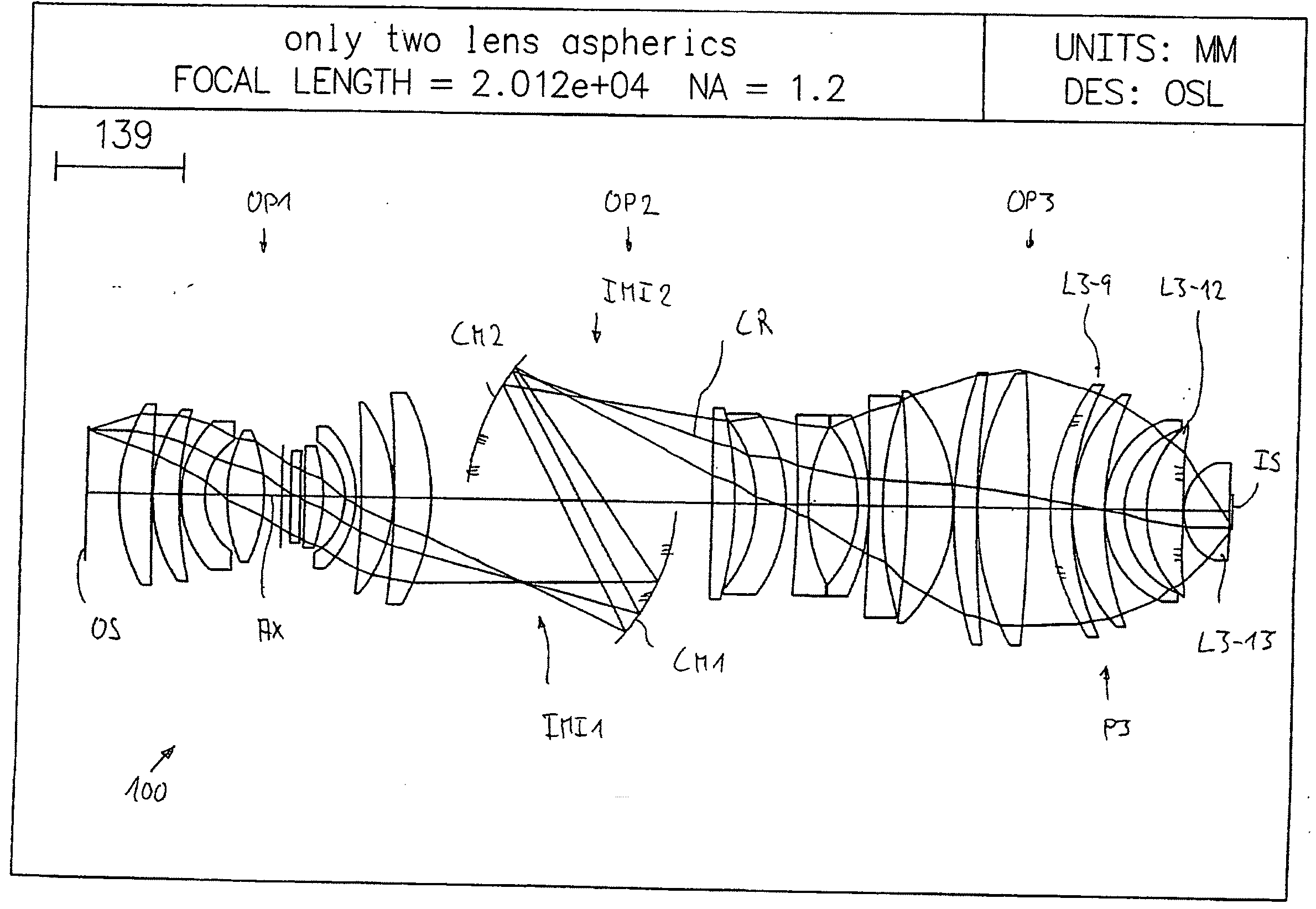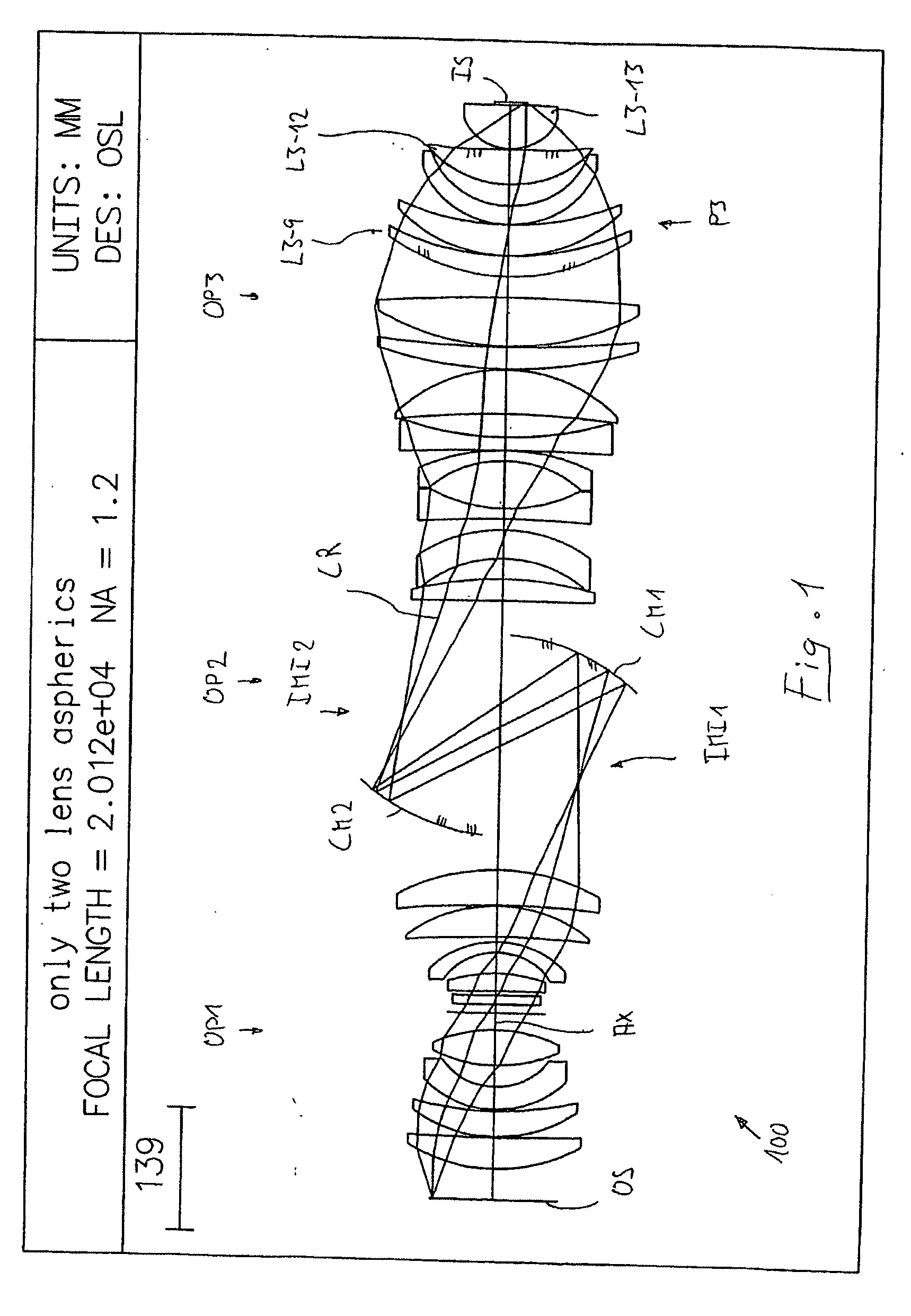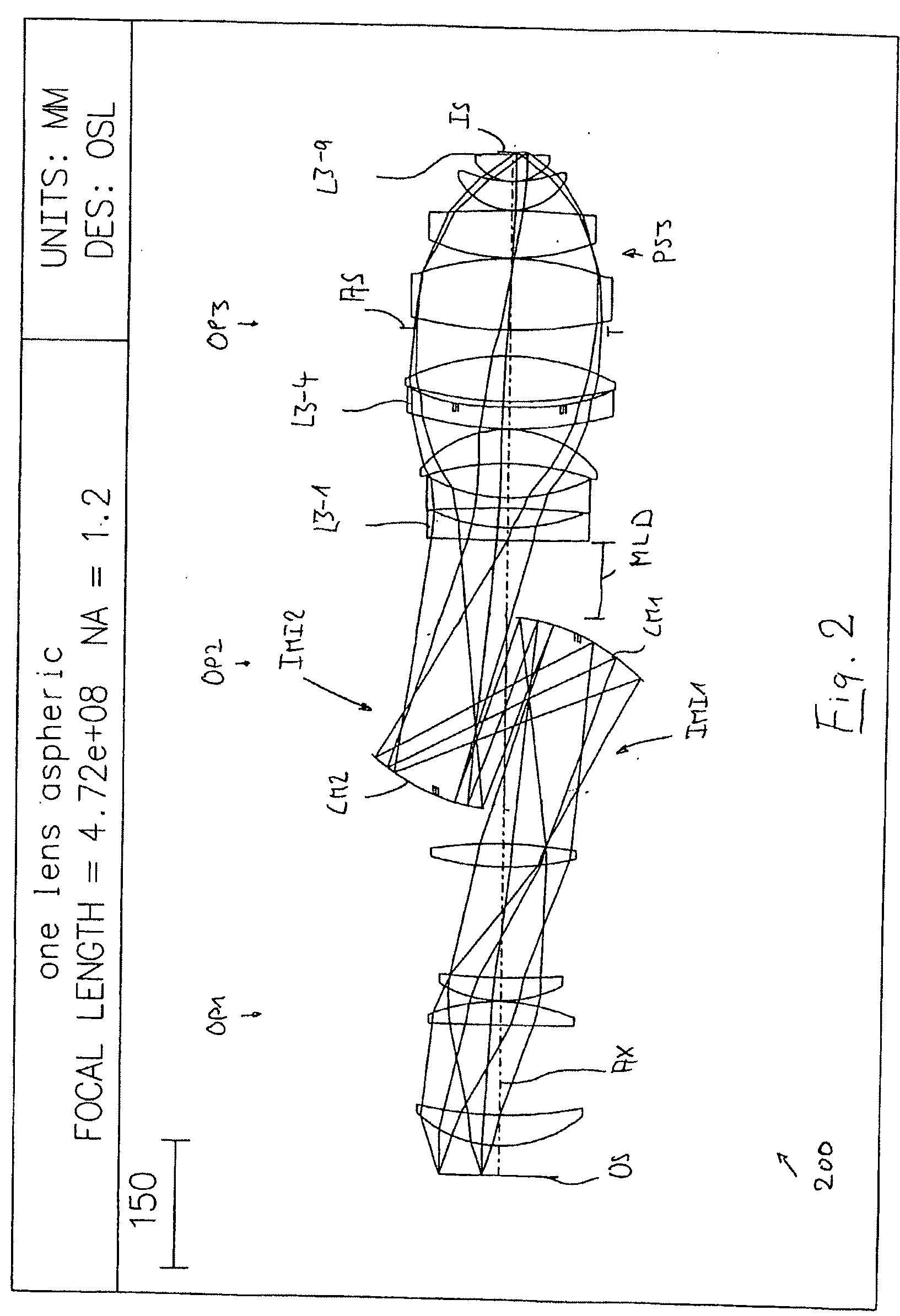Catadioptric projection objective
a catadioptric and objective technology, applied in the field of catadioptric projection objective, can solve the problems of insufficient color correction, limited material selection, and insufficient transparency of purely refractive system, and achieve the effect of high image side numerical apertur
- Summary
- Abstract
- Description
- Claims
- Application Information
AI Technical Summary
Benefits of technology
Problems solved by technology
Method used
Image
Examples
first embodiment
[0069]FIG. 1 shows a catadioptric projection lens 100 according to the invention designed for ca 193 nm UV working wavelength. It is designed to project an image of a pattern on a reticle arranged in the planar object surface OS (object plane) into the planar image surface IS (image plane) on a reduced scale, for example, 4:1, while creating exactly two real intermediate images IMI1, IM12. A first refractive objective part OP1 is designed for imaging the pattern in the object surface into the first intermediate image IMI1 at an enlarged scale. A second, catoptric (purely reflective) objective part OP2 images the first intermediate image IMI1 into the second intermediate image IM12 at a magnification close to 1:1. A third, refractive objective part OP3 images the second intermediate image IM12 onto the image surface IS with a strong reduction ratio. The second objective part OP2 comprises a first concave mirror CM1 having the concave mirror surface facing the object side, and a secon...
second embodiment
[0073]FIG. 2 shows a projection objective 200 having an all-spheric first objective part OP1 and only one aspheric lens L3-4 in third objective part OP3. An aperture stop AS is placed in the third objective part in the region of the pupil surface PS3 thereof. There is no need for a well-corrected position for an aperture stop in the first objective part OP1, which, in this case, consists of only four lenses, all lenses being spherical positive lenses. Thereby, a very simple and compact construction of the first objective part is obtained.
[0074]The projection objective 200 is designed as an immersion lens for λ=193 nm having an image side numerical aperture NA=1.20 when used in conjunction with a high index immersion fluid, e.g. pure water, between the exit surface of the objective and the image surface. The specification for this design is summarized in Table 2. The leftmost column lists the number of the refractive, reflective, or otherwise designated surface, the second column lis...
fourth embodiment
[0079]a projection objective 400 is shown in FIG. 4, the specification thereof is given in tables 4 and 4A. Similar to the embodiments of FIGS. 2 and 3, there is only one aspheric lens, namely positive meniscus lens L3-4 having an aspheric exit surface, in that system, placed in the third objective part OP3 in the region of largest beam diameter upstream of the aperture stop AS optically close to the pupil surface P3 of that objective part. The first objective part OP1 is all-spherical, having only one negative lens L1-4 in a sequence P-P-P-N-P, where “P” denotes a positive lens and “N” denotes a negative lens. From a construction point of view, a large axial distance between the vertex of the image side concave mirror CM1 and the first lens L3-1 of the third objective part OP3 is apparent, this distance MLD being more than 10% of the track length.
[0080]FIG. 5 shows a variant of the systems of FIGS. 3 and 4, where slight modifications predominantly in the first objective part OP1 we...
PUM
 Login to View More
Login to View More Abstract
Description
Claims
Application Information
 Login to View More
Login to View More - R&D
- Intellectual Property
- Life Sciences
- Materials
- Tech Scout
- Unparalleled Data Quality
- Higher Quality Content
- 60% Fewer Hallucinations
Browse by: Latest US Patents, China's latest patents, Technical Efficacy Thesaurus, Application Domain, Technology Topic, Popular Technical Reports.
© 2025 PatSnap. All rights reserved.Legal|Privacy policy|Modern Slavery Act Transparency Statement|Sitemap|About US| Contact US: help@patsnap.com



